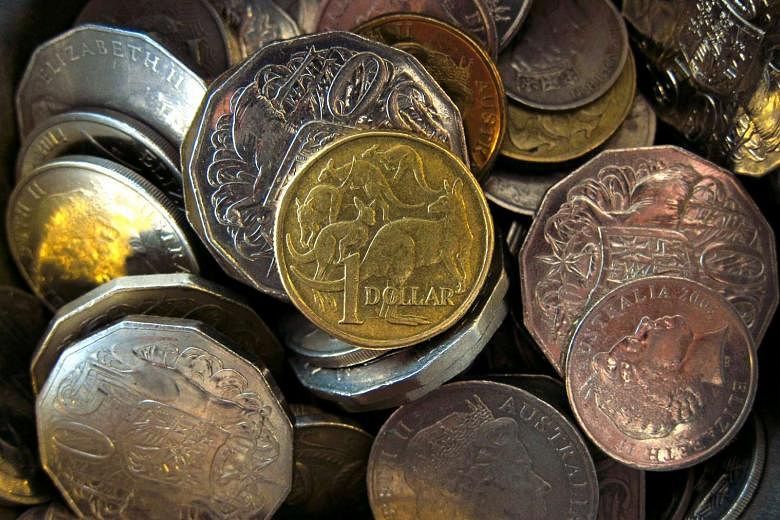SYDNEY (BLOOMBERG) - Australia's dollar tumbled against all of its major peers on Tuesday (May 3), while the nation's stocks and bonds rallied after the central bank unexpectedly cut interest rates.
Australia's currency slid 1 per cent versus the US dollar as the Reserve Bank of Australia (RBA) cut its benchmark interest rate by a quarter of a percentage point to a record low of 1.75 per cent, a decision forecast by 12 of 27 economists in a Bloomberg survey.
The Aussie fell after the decision, trading at 75.66 US cents as of 3 pm in Sydney, from as high as 77.19 cents earlier in the day.
It also slid sharply against the Singapore dollar, trading at 1.0163 to the Singdollar as of 1:55 pm, down 0.8 per cent from its close of 1.0243 on Monday.
The rate cut was likely aimed at countering the emergence of disinflation that's swept the developed world and limit currency gains that could complicate an economic transition.
Data last week showed quarterly deflation in the consumer price index and the weakest annual gain on record for core inflation - which the RBA aims to keep between 2 per cent and 3 per cent on average.
"Inflation has been quite low for some time and recent data were unexpectedly low," RBA governor Glenn Stevens said in his statement. "These results, together with ongoing very subdued growth in labor costs and very low cost pressures elsewhere in the world, point to a lower outlook for inflation than previously forecast."
The Aussie has risen as much as 15 per cent since mid-January and is likely to further restrain import prices in Australia. The resurgent Aussie also casts doubt on the sustainability of both the Australian labor market's improvement and the burgeoning tourism and education industries that led a 1 percentage point of gross domestic product turnaround in services exports.
The RBA has also been monitoring the impact of tighter regulations on home loans as residential prices in Sydney and Melbourne surged on easy policy.
"In reaching today's decision, the board took careful note of developments in the housing market, where indications are that the effects of supervisory measures are strengthening lending standards and that price pressures have tended to abate," Mr Stevens said.
"At present, the potential risks of lower interest rates in this area are less than they were a year ago."
Global policy is diverging and creating cross-currents as Europe and Japan move to negative rates and the US tightens policy. That, together with a resurgent price for Australia's biggest export, iron ore, has helped lift the Aussie dollar.
The RBA reiterated that "an appreciating exchange rate could complicate" the economy's transition. It also noted the rebound in the iron ore price in response to policy easing in China, Australia's biggest trading partner.
"Commodity prices have firmed noticeably from recent lows, but this follows very substantial declines over the past couple of years," Mr Stevens said. "Australia's terms of trade remain much lower than they had been in recent years."
He also noted that China's growth rate "moderated further" in the first part of the year.
Mr Stevens was upbeat on Australia's growth after the economy expanded 3 per cent last year.
"Indications are that growth is continuing in 2016, though probably at a more moderate pace," he said. "Labor market indicators have been more mixed of late."

